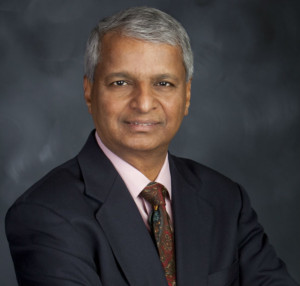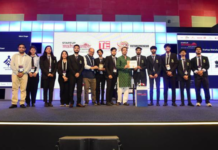By Desh Deshpande
(Editor’s note: This is Part-5 of the weekly video column with philanthropist and serial entrepreneur Desh Deshpande, with excerpts from his book “On Entrepreneurship and Impact.” This column appears every Monday.)
“A leader has the vision and conviction that a dream can be achieved. He inspires the power and energy to get it done.”–Ralph Lauren

Establishing and communicating a compelling vision is very important. It helps you attract great talent, good board members and advisors. It will also move the needle on the investment front.
Doing anything meaningful in life is hard. You need to have a story that explains that while you are setting out to do something hard, it is well WORTH doing.
For example, when we were building Cascade Communications, our vision was very simple.
Just as every phone was connected to every other phone, our vision was to connect every computer to every other computer in the world.
It sounds silly now, but this was 1990 when long distance communications were controlled by monopolies.
To realize our vision, we needed two things:
1) Computer communications networks had to move from private to public networks.
2) The public carriers needed to implement data switches.
Cascade Communications’ opportunity was in building packet switches for the public networks.
While building those products we went through a number of iterations and evolved, but the vision remained the same.
Every employee was excited to work on what was on their table. They showed a lot of passion. They obviously knew that their work was contributing to the big vision of connecting all the computers in the world into one network.
One important thing to remember – Setting and communicating a big vision is not the end, but a great beginning.
While there is a need for a big vision, the execution has to be planned step-by-step. A big vision by itself doesn’t really change much.
Execution is where the magic happens.
Coming back to the example of Cascade Communications – the journey was not an easy one just because we had a clear and compelling vision. Many venture firms passed on us. Their thinking was that since our buyers were limited to big telecommunication firms, like Verizon and AT&T, a startup like Cascade Communications would be squeezed by these monopolies.
Luckily, timing was on our side. The new regulatory framework in the US gave birth to several smaller players who were eagerly looking for a technology that would provide them with a competitive advantage. The data packet switches from Cascade Communications fit the bill nicely.
In 1997, when the company merged with Ascend Communications and Lucent, Cascade Communications was carrying 80% of the Internet traffic.
I like to build companies where every one of the employees feels like a founder of the company. It is very apparent that they know and believe in the vision when someone asks them, “What do you do?” and you see a spark in their eyes when they answer it.
A compelling vision communicated well is what will make your team members excited to come and work Monday morning.
(About Desh Deshpande: During his entrepreneurial career spanning over three decades, Gururaj “Desh” Deshpande has built several companies. He has injected his passion for innovation and entrepreneurship into a number of social impact initiatives in India, the USA and Canada. He has been recognized for his entrepreneurial accomplishments by many institutions including being named co-chair of President Obama’s National Advisory Council on Innovation and Entrepreneurship. He currently also serves as a Life Member of the MIT corporation. He resides in Boston together with his wife, Jaishree.)







